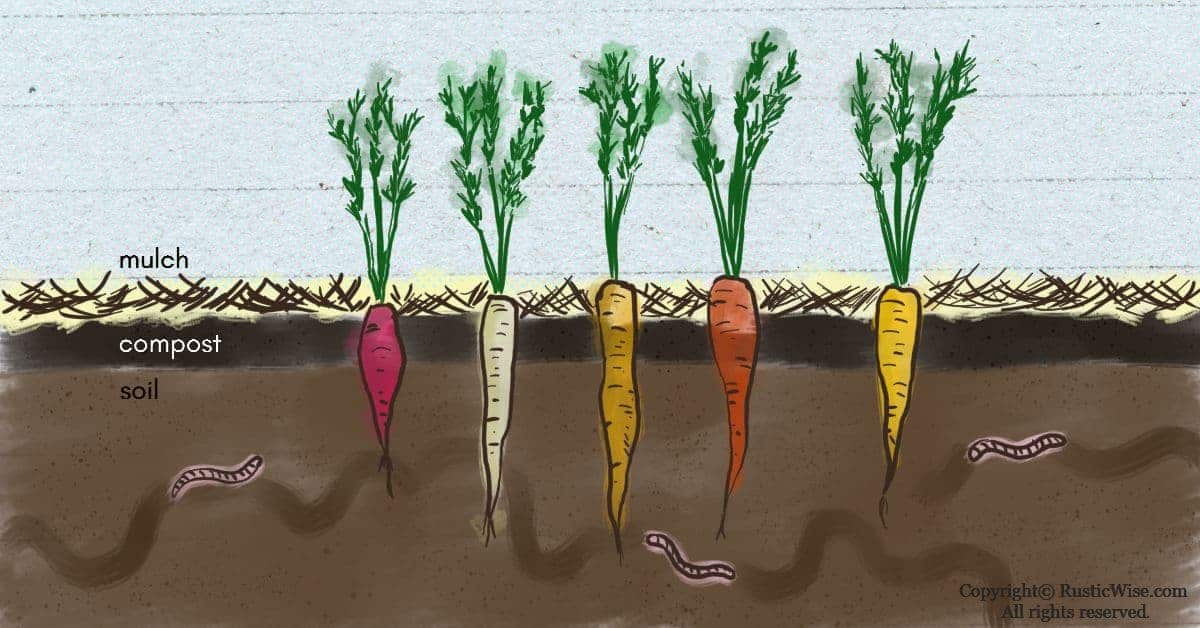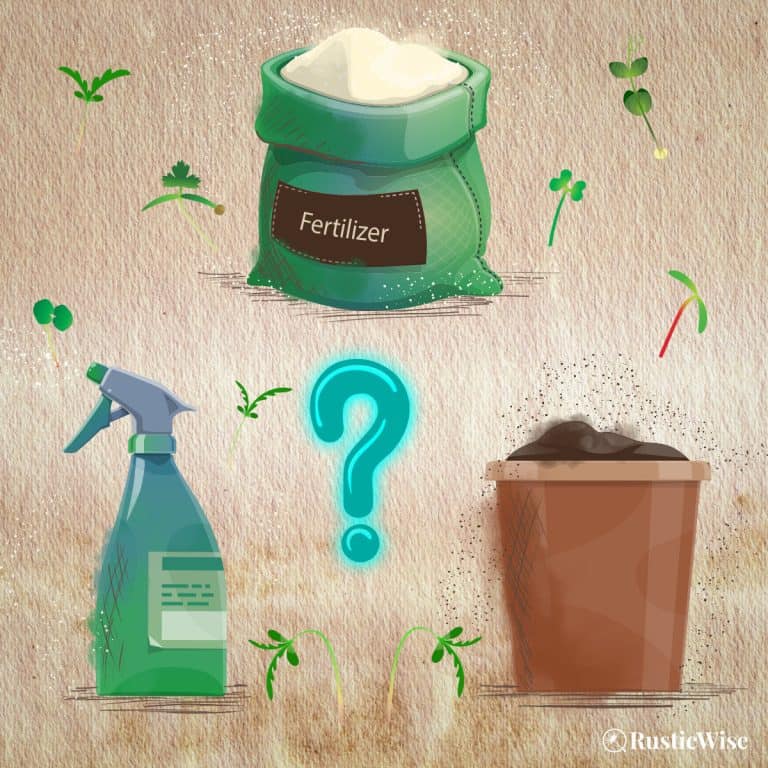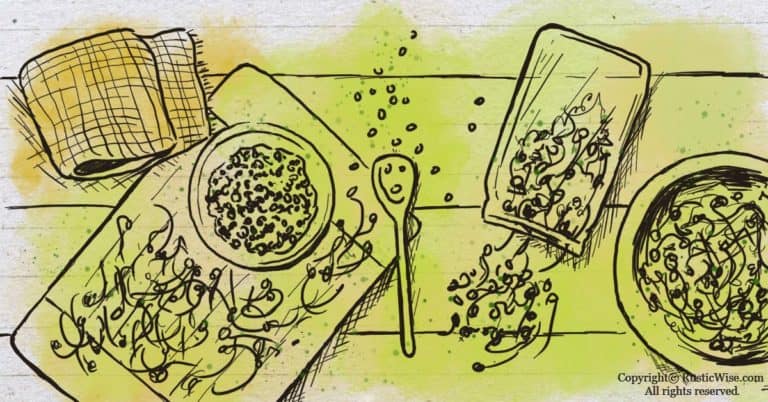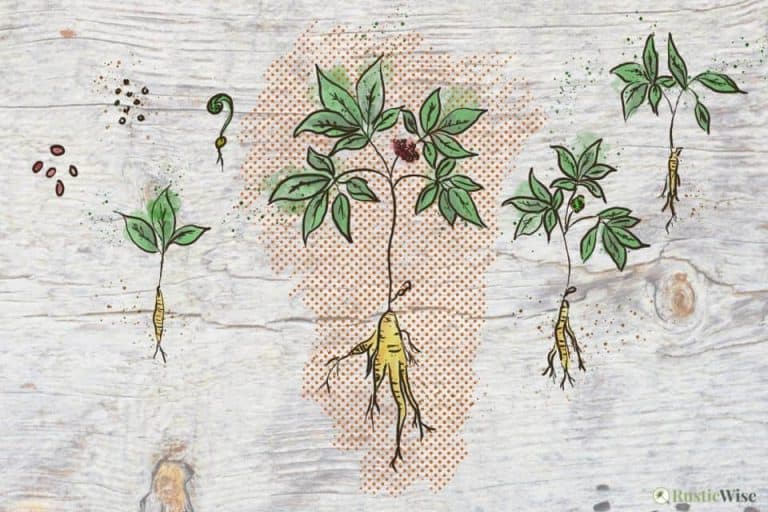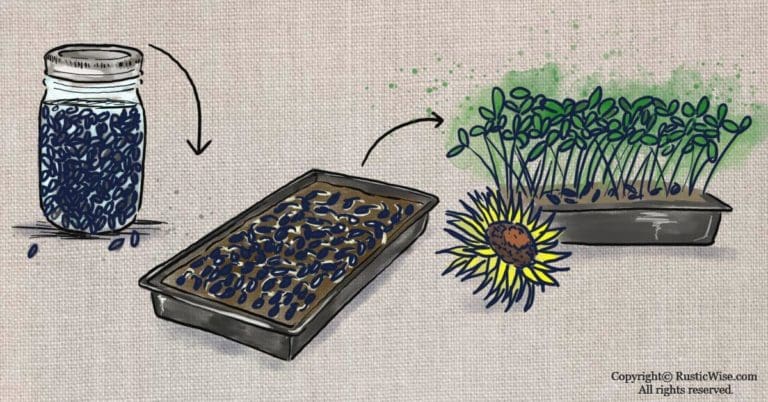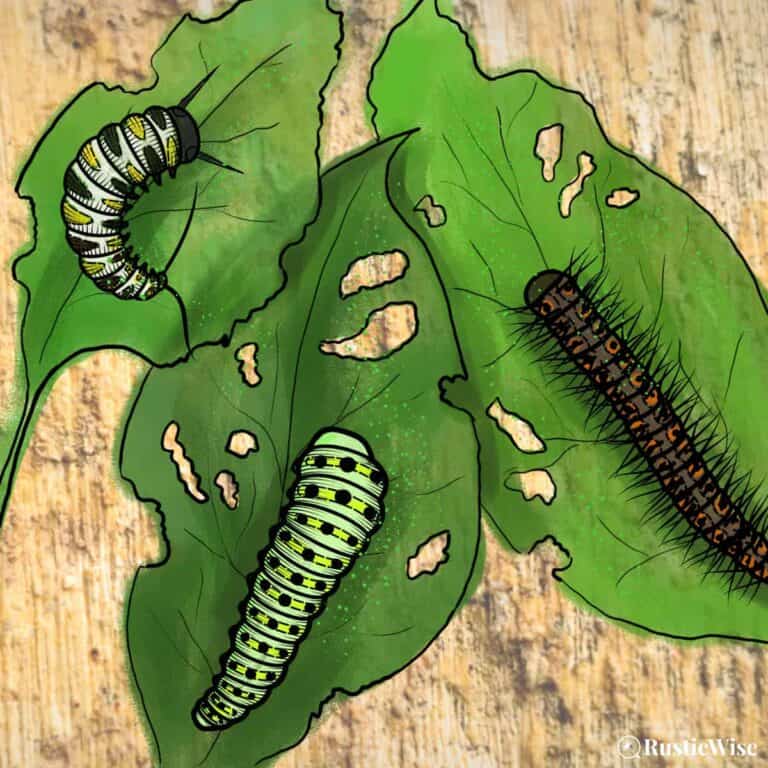What’s the Difference Between Compost and Mulch?
Compost and mulch share some similarities, which is why these two terms are often confused. But, there are some key differences that you should know about. So, what exactly is the difference between compost and mulch? Compost can be defined as organic material such as plant waste or kitchen scraps that have decomposed into humus, a nutrient-rich soil that’s often incorporated into existing soil as a soil conditioner or amendment. Mulch on the other hand is an organic or inorganic layer placed on top of soil to prevent weed growth and maintain moisture and temperature levels for plants.
If you’re looking for a way to improve your garden, compost and mulch are two great materials you can add to enhance your plants, vegetables, and overall landscaping. We’ll take a look at the difference between compost and mulch, what they are used for in a garden, benefits of each one, and when to apply them. Read on to learn more about these two things and how they can work together to create a gardener’s paradise!
At a glance: what’s the difference between compost and mulch?
Let’s take a quick look into the differences between compost and mulch. One key point to keep in mind is that mulch is applied on top of soil. Things get a bit more muddy as many people also use compost as a mulch (applied to the top of soil).
Here’s a table outlining key differences between composting and mulching.
Table: Compost vs. Mulch
| Compost | Mulch | |
|---|---|---|
| In a nutshell | Decomposed organic material that’s biologically active and full of nutrients. Once fully decomposed, compost looks like rich, deep-brown soil and has an earthy aroma and is called humus. | Can be made of organic (wood chips, bark, leaves) or inorganic (man-made fabrics, or rubber) materials. Applied on top of soil. Mulch is often in composed of larger chunks of material than compost. |
| Benefits | – Adds nutrients and enables plants to easily access soil nutrients. – Acts as a soil conditioner (as a supplement to fertilizer) by improving the structure of soil. – Improves overall plant health for a more lush garden. – Resists pests and diseases in plants. | – Suppresses weed growth. – Helps to retain moisture (especially during hot weather). – Prevents soil from erosion (either wind or rain). – Helps moderate soil temperature by keeping plant roots cool. – May add nutrients to soil when decomposed (if using organic mulch). |
| Uses | Used as a soil amendment for new plants (mixed together with soil) during planting; or as a dressing or mulch for existing plants. | A layer is spread on top of soil and around plants. |
| Main types | – Homemade from a bin or compost pile – Homemade from a vermicompost (worms) – Store-bought compost | Organic: bark, leaves, grass clippings, straw, wood chips, newspaper Inorganic: stones, gravel, rubber, synthetic landscape sheeting, plastic sheeting |
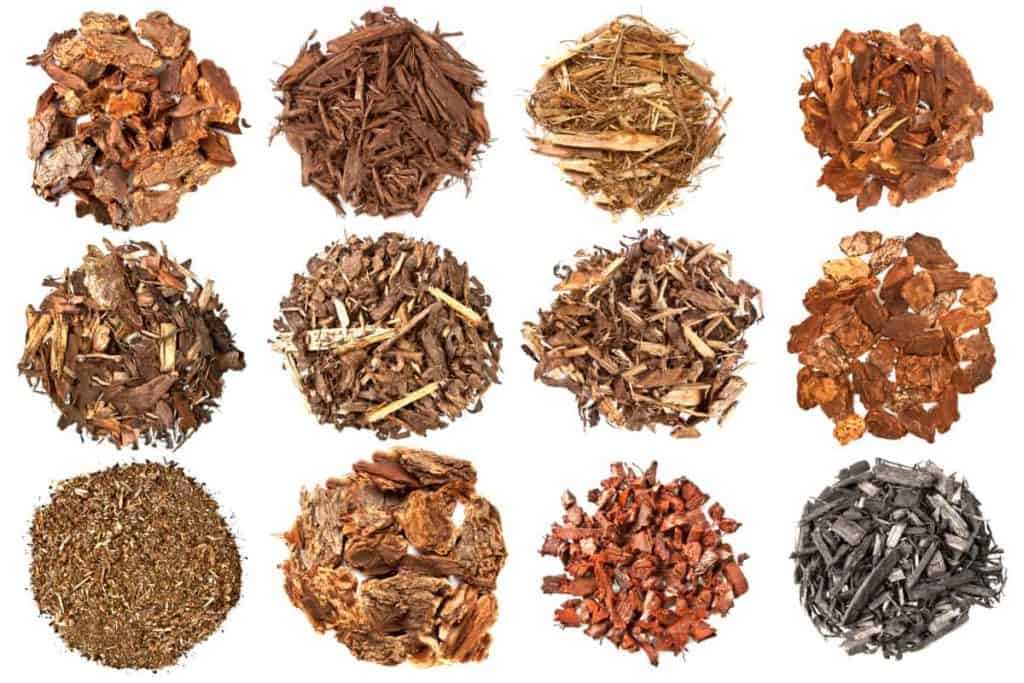
Composting 101: composting basics
Compost is any organic matter that has been decomposed under controlled conditions and then used as a soil amendment or conditioner. It’s produced under aerobic (with oxygen) conditions.
There are many different ways to make a compost pile or bin, but the important thing to remember is that it needs both “green” materials and “brown” materials to decompose efficiently.
Green materials are nitrogen-rich and help boost the growth of microorganisms that help in breaking down materials. These materials are fast at breaking down. Examples of green materials include:
- Kitchen food scraps such as apple cores, wilted greens, banana peels
- Grass clippings
- Young weeds that have not gone to seed
- Plant clippings
- Animal manure from poultry, horses or cattle (do NOT add pet feces from cats and dogs)
Brown materials are packed with carbon which is essential to the decomposing process. These items take much longer to decompose, so it’s best to break them into small pieces first before adding to your compost. Examples of brown materials are:
- Twigs and branches
- Dead leaves
- Unbleached paper products (shredded paper, toilet paper tubes, newspaper)
- Sawdust or wood chips
While there are differing opinions on the ratio of brown to green materials, a good rule of thumb is to aim for half-and-half, according to the book, Compost: How to make and use organic compost to transform your garden by Clare Foster.
It’s not enough just to randomly throw in a bunch of scraps and hope for nature to work her magic—you also need to add moisture and turn the compost regularly.
It’s important to keep your compost pile moist, but not too soggy. Turning the compost is vital as it helps distribute moisture and infuse oxygen throughout. The more often you turn your compost, the faster it breaks down.
For more information about composting, check out our other articles:
What is a Compost Pile and Helpful Tips for Starting Your Own
Compost Tips: What’s the Fastest Way to Make Compost?
Can Bread be Composted? Yes, Here’s How.
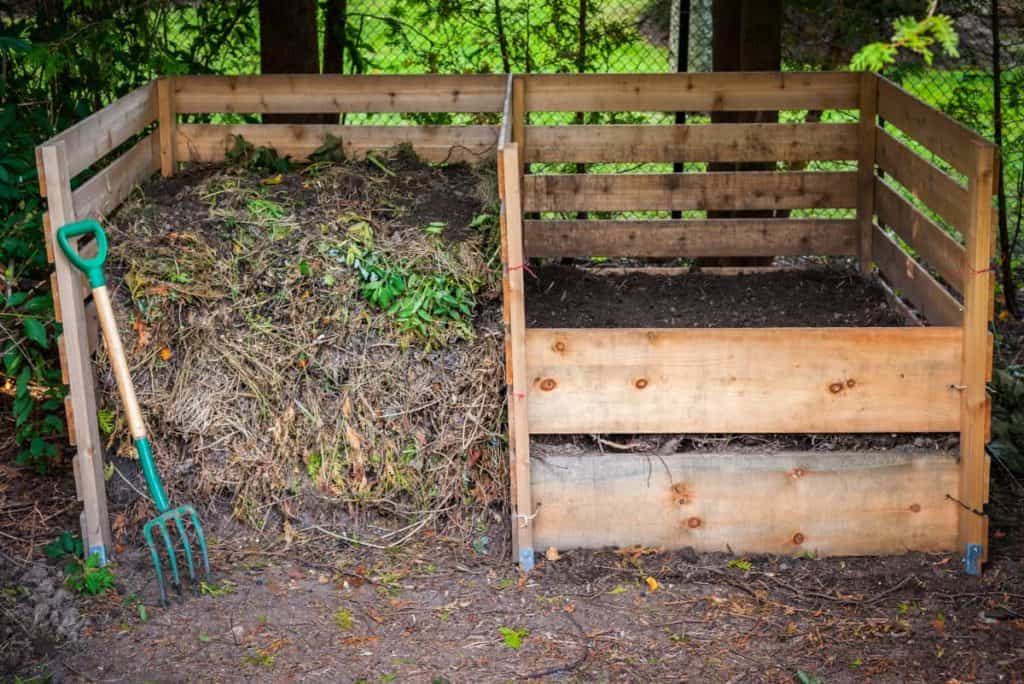
Benefits of using compost
By making your own compost pile, you’re not only diverting garbage from the landfill, you’re also creating a free source of organic nutrients for your garden. There are so many benefits of adding compost to your garden.
- Adds nutrients: Give your vegetables and plants a shot of nitrogen, phosphorous, and potassium with compost. This helps reduce your need for store-bought synthetic fertilizers saving you money. While compost provides a boost of nutrients, you may still need to supplement with the occasional fertilizer treatment.
- Improves soil quality: Compost helps improve soil structure and tilth. Soil that’s amended with organic compost allows for better air flow, water retention, and reduces soil compaction. It also creates beneficial microbes that help plant growth. Have sandy soil? Adding compost helps to retain moisture. If your soil has too much clay, compost helps improve aeration.
- Improves resistance to pests and plant diseases: Compost helps build up a plant’s immunity to certain conditions. When amended with compost, plants are less susceptible to common diseases like scorch or blight because they’re better equipped to ward off these conditions.
- Adds beneficial organisms: Compost contributes a healthy dose of soil microorganisms which help break down organic matter in your garden which is important for nutrient recycling.
Tip: Regularly adding compost to your soil helps to improve your soil quality over the years.
How to use compost in the garden
Now that you know all about the great things that compost adds to your garden, you’re probably itching to get started. Before you dive in, it’s important to know how to properly use it. We’ve gathered a few tips from the University of Georgia Extension on how to use compost as a soil amendment, how to add it to your potting mix, and how to use it as mulch. Let’s get started!
Soil amendment
Compost-enriched soil is just better soil. Period. To improve your soil, add about 1–2 inches (3–5 centimeters) of humus, or fine compost to your soil. Till or incorporate well so that the compost is mixed into the top 6–8 inches (15–20 centimeters) of soil.
Potting Mix
To provide a boost to your potting mix, add leaf compost. Be careful not to add too much compost as this may cause waterlogging or root rot. Keep the ratio to between one-quarter to one-third compost to potting mix.
Tip: If you’ve added weeds to your compost pile and are worried about possible weed seeds, or other diseases, you can pasteurize your compost before adding to potting mix. Place compost in your oven for 30 minutes at 160 degrees Fahrenheit (71 degrees Celsius).
Mulch
Compost makes a great mulch for any type of garden or flower bed. The great thing about using compost as mulch is that it doesn’t need to be completely decomposed, or finished compost—larger chunks of compost actually help to keep soil warmer during the winter months if applied in the fall. The compost gives off heat as it continues to decompose.
To use compost as mulch, apply a layer between 3–6 inches (8–15 centimeters) thick around the bases of plants.
When applying compost as mulch, it kick starts all sorts of good things in the soil: as the compost’s nutrients seep into the soil, it makes the soil more inviting to your gardening friends, the earthworms. Earthworms help to aerate the soil making it better for plants.
When to use compost
If you apply your compost as mulch too early in the season, the soil remains cold beneath. If you’re applying compost as mulch to a perennial garden, add in the spring once soil is beginning to warm up. You may want to remove any old remaining mulch in the early spring to allow the soil to warm up naturally.
For annual gardens, apply at the end of the gardening season to improve the soil for next season.
Mulching 101: what you need to know about mulch
Mulch can be any organic or inorganic material spread around the base of plants. It’s applied on top of soil and not incorporated (as is often the case with compost).
Mulch provides protection for the ground against erosion by water or wind; helps retain moisture in the soil; prevents weed growth; and provides some nutrients to plants when decomposed (if using organic mulch).
While mulch has many practical benefits, it’s also used boost the visual appeal of gardens by adding a splash of color, or contrasting texture.
While there are inorganic mulch materials, most gardens would benefit from the added nutrients that organic mulches bring to the soil once decomposed.
Examples of organic mulch:
- Bark
- Wood chips
- Leaves
- Grass clippings
- Newspaper
- Straw or hay
Examples of inorganic mulch:
- Gravel
- Stones
- Rubber
- Landscape sheeting
- Plastic sheeting
Benefits of using mulch
Let’s dig a bit deeper into how mulch benefits your garden or flower beds.
- Suppresses weed growth: One of the main reasons people use mulch is to prevent the growth of pesky weeds.
- Helps to retain moisture: A layer of mulch can do wonders especially during hot weather, or if you’re prone to dry, sandy soil. Mulch prevents water from evaporating too quickly and reduces the need for watering plants.
- Prevents soil from erosion: Exposed soil is at the mercy of nature’s elements. Protect your precious soil from heavy rains or winds by laying down a layer of mulch.
- Helps moderate soil temperature: Mulch provides a buffer from temperature fluctuations by maintaining a more consistent soil temperature. It also helps by keeping plant roots cool.
- Prevents soil compaction: After heavy rains, soil becomes compacted which leads to poor air circulation. Mulch helps retain soil’s structure even after downpours.
- May add nutrients to soil: When decomposed (if using organic mulch), mulch provides many of the same benefits of compost.
- Adds visual interest: There are so many varieties of mulches each with their own texture, color, and shape to complement any style of garden. Mulch also creates a “tidier” looking garden.
- Keeps things clean: Prevent soil from splashing onto vegetables and fruits, or from sticking to the bottom of your shoes!
How to use mulch in the garden
Before applying mulch, try to pull out as many weeds as you can. Remember to leave a few inches of space around the base of plants to prevent moisture buildup (which may encourage the growth of plant diseases or pests).
- Bark mulch and/or wood chips: Apply 2–4 inches (5–10 centimeters) around shrubs, trees, and perennial plants. Leave a couple inches of space around the base of trees. Smaller pieces are easier to distribute, especially if you have many plants close together.
- Leaves: Apply 3–4 inches (8–10 centimeters) of finely chopped leaves. If you have dry leaves, you can use up to 6 inches (15 centimeters).
- Grass shavings or clippings: Apply 2–3 inches (5–8 centimeters) of organic grass clippings. Avoid laying down too thick a layer of grass as this may create a thick barrier that may become slimy.
- Newspaper: Here’s another great use of old newspapers. Apply a 1/4 inch of individual newspapers directly on top of soil. Weigh down newspapers by applying grass clippings or another type of organic mulch.
- Straw or hay: Works great in a vegetable garden. Apply a thin layer of about 3–6 inches (8–15 centimeters). Be on the lookout for small rodents as they tend to like to make their homes in straw or hay!
When to use mulch
There are many times of the year that you can apply a layer of mulch depending on what your gardening goals are (preventing weeds, moderating soil temperatures, etc.).
If using in spring, wait until soil has sufficiently warmed up first.
If using in summer, apply mulch to keep soil cool.
In the late fall, use mulch as a way to protect plants from frost due to fluctuating temperatures. Apply mulch once the ground has frozen but before the true cold temperatures have arrived; this is to prevent pests from making a home in your “warm” soil.
Gardening harmony: how to use both compost and mulch together
Mulch is a natural substance that you can use to protect your plants from weeds and pests, while compost provides good structure and nutrients to soil.
So it makes sense to use both of these gardening materials together!
To do this, simply apply a thin layer of compost on top of soil first, followed by an organic mulch of your choice (such as shredded leaves) on top of the compost to cover it. The compost and mulch layers work together to maintain moisture which creates a favorable environment for plant growth.
Which is better: mulch or compost?
The answer to this really depends on what your individual needs are, but as a general rule mulch is better for short-term gardening needs (as organic mulch needs to be replaced once a year or so). Compost is great if your goal is to improve your soil quality long-term.
Really, there’s a place for both mulch and compost in your garden!
The takeaway: the difference between compost and mulch
Compost and mulch are often confused, but there is a difference between the two. Mulch helps maintain moisture levels for plants by acting as an organic or inorganic layer placed on top of soil to prevent weed growth. The purpose of compost is to convert plant waste and other kitchen scraps into humus which can be incorporated into existing soil to make it more nutrient rich. Use both compost and mulch together to create a healthier garden!
Related questions
Can too much compost hurt plants?
When it comes to compost, yes, there is such a thing as too much. Compost is a source of nitrogen and too much of it can create an imbalance in soil making it less than ideal for plant growth.
Some people ask if it’s okay to plant directly into compost, and the answer is, no. You should add no more than between one-quarter to one-third compost to potting mix. Or, if applying a compost mulch to the top of soil, add between 3–6 inches (8–15 centimeters).
Should old mulch be removed?
Yes, old organic mulch should be removed once a year before adding new mulch. This helps prevent a thick layer of decomposing materials from building up which will interfere with plant growth (either not allowing access to nutrients, or creating a rotting mess!).
Inorganic mulch such as stones or gravel do not need to be removed.
👉 If you like this post, see our complete Composting Collection.
Would you like more timeless tips via email?
Fun tips to help you live an independent, self-sustaining lifestyle. Opt-out at any time.


References
- UCCE Master Gardeners of Orange County, California; Soil Management, http://mgorange.ucanr.edu/Soils-Fertilizers-Compost/. Accessed May 2021.
- Foster, Clare (2014). Compost: How to make and use organic compost to transform your garden. Mitchell Beazley. ISBN 978-1-84533-895-4.
- University of Georgia Extension, Composting and Mulching, https://extension.uga.edu/publications/detail.html?number=C816&title=Composting%20and%20Mulching#Uses. Accessed May 2021.
- United States Department of Agriculture, Natural Resources Conservation Service, Mulching, https://www.nrcs.usda.gov/wps/portal/nrcs/detail/?cid=nrcs143_023585. Accessed May 2021.

Author: Josh Tesolin
Josh is co-founder of RusticWise. When he’s not tinkering in the garden, or fixing something around the house, you can find him working on a vast array of random side projects.

